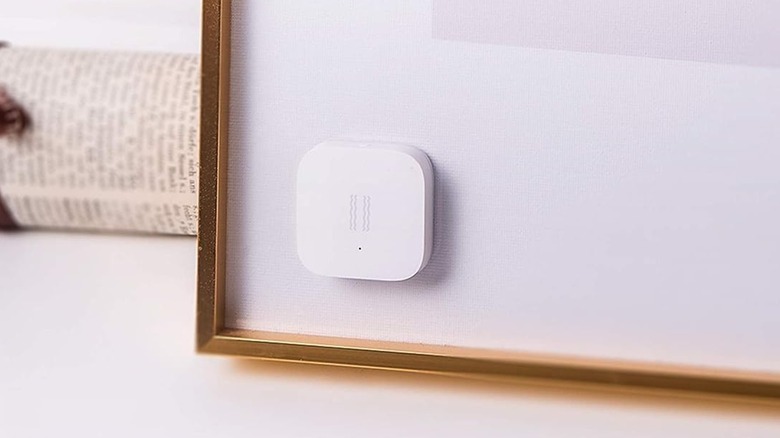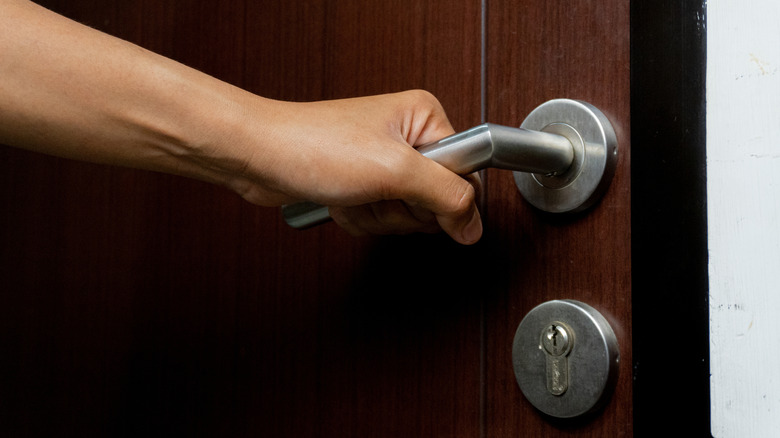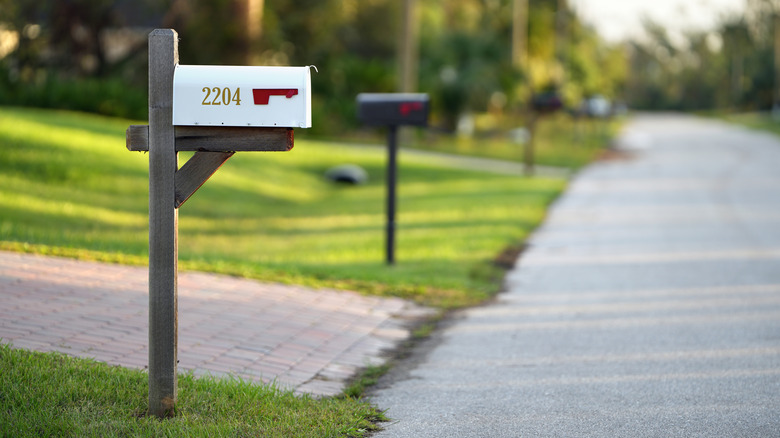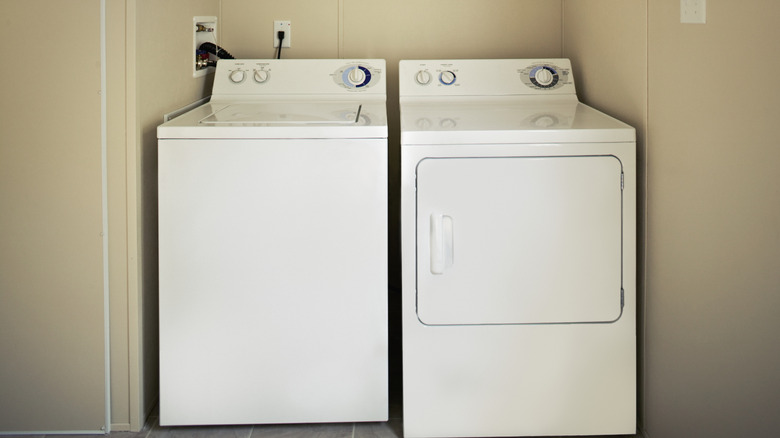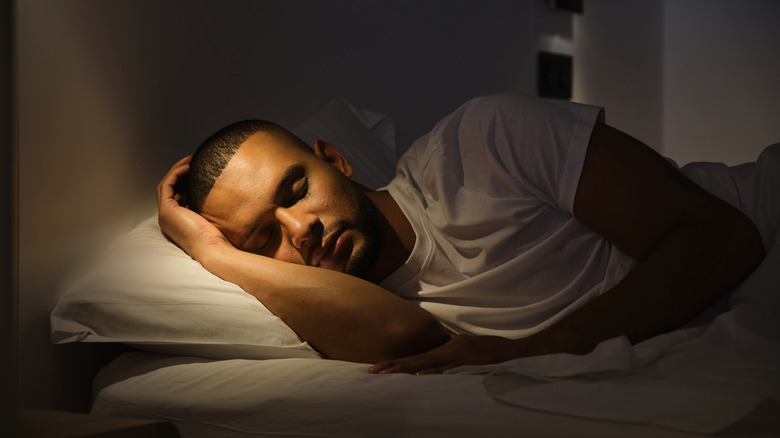5 Handy Uses For Vibration Sensors Around The Home
We may receive a commission on purchases made from links.
One of the cool things about modern technological development is that new devices give us greater control and connectivity than we previously had. We're not just talking about new ways of interfacing with our devices, either — new advancements in smart technology give us surprisingly simple and convenient ways to track and utilize even the most mundane elements of our lives in new and interesting ways.
For example, have you ever thought about how much vibrational force you generate on a daily basis? Of course you haven't — it's such a minute detail in life. But with the power of smart tech, specifically compact vibration sensors, you don't need to track such things yourself. A vibration sensor can detect subtle motions, sudden impacts, or even the lack of either and either send you notifications or use that stimulus to connect to other devices. Just like that, you have an entirely new avenue of connectivity that you can put to use all over your home.
Always know when someone's opening a door
The first and most obvious thing you can do with a vibration sensor is attach it to anything that opens or closes in your home. This could include things like the front door, a backyard screen door, your windows, or even the cabinets and drawers in your kitchen. By syncing a vibration sensor up to your smartphone or your smart home network, you can immediately receive a notification when any of these spots detect sudden movement.
A vibration sensor is a good way to add some extra security to your smart home setup. You can attach a vibration sensor to your front door and activate it at night. If you get any sudden notifications, someone has entered your home. Granted, you could do this with an alarm system, but a standalone vibration sensor is much easier to install than an elaborate security panel. This setup could also be helpful for more mundane things, like remembering to close the windows when it's raining or making sure your kids aren't sneaking into the pantry for cookies.
Get a notification when the mail arrives
Whether you live in a house or an apartment, odds are good your designated mail receptacle is never as close as you'd like it to be. If you live in a house, you've probably got a mailbox over on the curve that you can't see from most rooms. If you live in an apartment, you've probably got a mail cubby either multiple floors down from you or even in another building entirely. Either way, unless you go out of your way to check your mail every single day, potentially vital correspondence will sit unattended for days.
To remedy this, you can install a vibration sensor in or near your mail receptacle. As long as the sensitivity is set high enough, it should detect when a postal worker opens the door and sticks your mail inside. This way, not only will you know exactly when the mail comes every day, but if you don't have any new mail, you don't have to trudge all the way out to the box to look. This approach should work just as well for an apartment mail cubby, though you might want to ask your landlord first before you install anything.
Know exactly when the washer or dryer finishes
In a similar vein to the mail, it can be annoying trying to keep track of your laundry during a busy day. Some washers and dryers do have built-in alarms to let you know when they're done, but you might not be close enough to hear them go off. If you're lucky, your washer and dryer have some smart tech that'll send you notifications, but that's assuming you have a sufficiently fancy setup. Without either of those notification systems, your clothes will be sitting in the dryer, getting wrinkly, or sitting wet in the washing machine.
If you need to bestow some smarts on your dumb washer and dryer, a vibration sensor is a great way to do it. Nothing shimmies and shakes like washers and dryers, after all — just set a sensor on one or both and set it up to send you a notification when all the shaking stops. Provided you have your phone on you, you'll know almost right away when the cycle is done. You might need to set a brief time limit before the notification goes out, though, as some washers do pause for a few seconds between cycle segments.
Track how much you roll around while sleeping
Sleep tracking has become a popular use for smart tracking in recent years as exhausted users try to figure out what's keeping them from getting a full night's rest. The most common, readily available means of sleep tracking is wearable tech like an Apple Watch. This is a good way to get an accurate reading of your nighttime metabolics, but wearing a bulky watch to bed can be a bit uncomfortable. If you'd rather have a touch-free means of tracking your sleeping habits, you could try sticking a vibration sensor on or under your bed.
If you activate the vibration sensor before you go to sleep, it'll quietly monitor the movement on the bed throughout the night. Every time you thrash, toss, and roll over in your sleep, the sensor will log the time and intensity of the movement. With the help of a data logging device or app, you can compile a daily report of your nighttime movements to get an idea of how sound your sleep actually is. This data could be used as a baseline for personal experimentation, such as changing your sleeping position or nightly routine to see if it affects your movement statistics.
Set up cool contextual effects
Even if you don't have any practical concerns that could be addressed with a vibration sensor, that doesn't mean such a device would be completely worthless. You know what they say: When all your needs are addressed, move on to wants. With a bit of creativity and some smart home know-how, you can use a vibration sensor to set up all kinds of cool and convenient effects and features around your home.
For example, do you like having soothing sounds when you're trying to sleep or relax? If you attach a vibration sensor to your bed or favorite recliner, it'll detect it when you lay or sit down. From there, you can use a smart setup to have a speaker begin playing soothing music or your lamp dim the lights. You could also attach a sensor to your favorite workout equipment like a treadmill and track your usage time, or just have your speaker automatically start playing your motivational music playlist.
